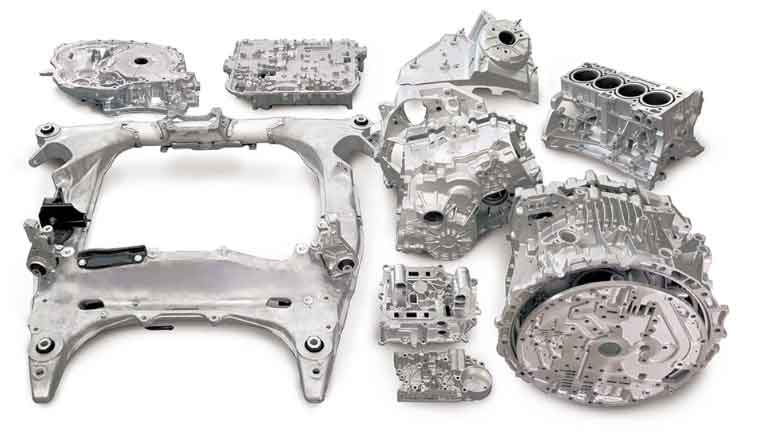
Die casting techniques can be broadly categorized into two main types: pressure die casting and gravity die casting. While both methods involve the injection of molten metal into a mold cavity, there are notable differences in terms of the forces applied and the overall process. Here’s a comparison of pressure die casting and gravity die casting:
- Pressure Die Casting:
- Process: In pressure die casting, molten metal is injected into the mold cavity under high pressure using a plunger or piston. The pressure ensures rapid and complete filling of the mold.
- Equipment: Pressure die casting requires specialized machines equipped with a hydraulically or mechanically operated plunger system to apply the required pressure.
- Force: The molten metal is injected into the mold at high speeds, creating significant pressure that aids in the complete filling of intricate details and thin sections of the component.
- Precision and Complexity: Pressure die casting allows for the production of complex and detailed components with high precision and tight tolerances.
- Production Speed: The high-pressure injection enables rapid production cycles, resulting in high production volumes and shorter lead times.
- Materials: Pressure die casting is commonly used with non-ferrous metals and alloys such as aluminum, zinc, magnesium, and copper-based alloys.
- Gravity Die Casting:
- Process: In gravity die casting, the molten metal is poured into the mold cavity under the influence of gravity. The metal fills the mold cavity naturally, without the need for high-pressure injection.
- Equipment: Gravity die casting typically utilizes permanent molds made of steel or cast iron. The molds can be reused multiple times.
- Force: Gravity alone is responsible for filling the mold, and no additional pressure is applied during the casting process.
- Precision and Complexity: Gravity die casting is suitable for producing components with simpler designs and larger dimensions. It may not offer the same level of intricate detail as pressure die casting.
- Production Speed: Gravity die casting generally has slower cycle times compared to pressure die casting due to the slower filling process.
- Materials: Gravity die casting is commonly used with a range of materials, including aluminum, brass, and some cast iron alloys.
Choosing between pressure die casting and gravity die casting depends on several factors, including the complexity of the component, desired production volume, cost considerations, and material requirements. Pressure die casting is typically favored for high-volume production of intricate and precise components, while gravity die casting is suitable for simpler designs and smaller production volumes. Both techniques have their strengths and limitations, and the selection should be based on the specific requirements of the application.
